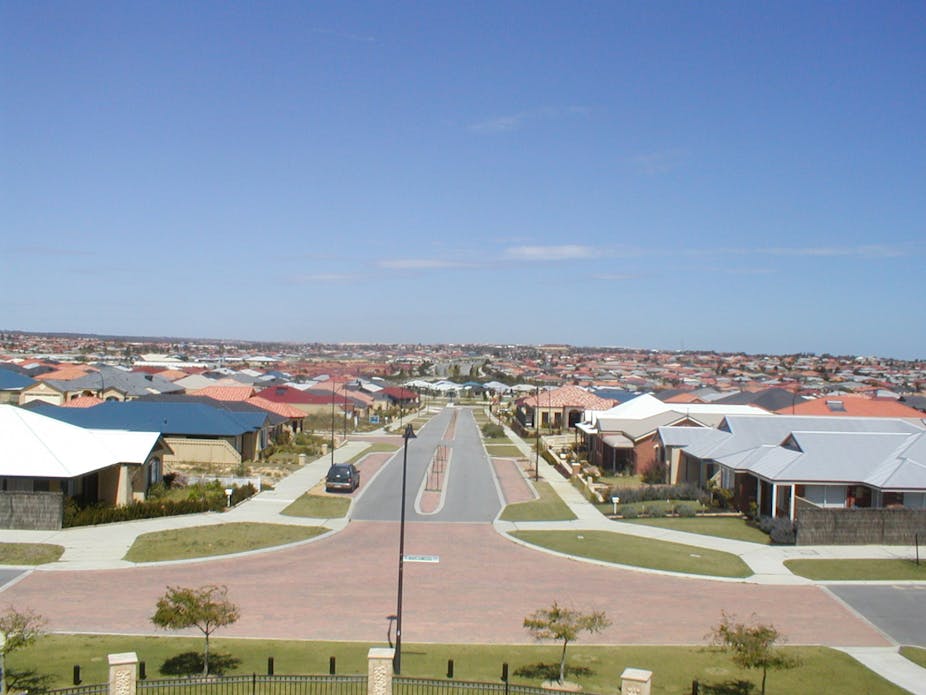Is Australia becoming a nation of renters, and are planners to blame? Newspaper headlines accompanying the release of a new report on housing supply and affordability, by the federal government’s independent National Housing Supply Council, suggest we’re being priced out of our own homes.
In fact, the actual report, released on March 1, finds that overall rates of home ownership - around 70% of Australians - remain stable, although fewer young people are taking out a mortgage, and fewer new households are forming.
Popular demographers have dubbed this the KIPPERS phenomenon (Kids In Parents Pockets and Eroding Retirement Savings), and worse. Yet in truth, and as the supply council’s report points out, the real affordability problem in Australia is at the bottom end of the market, where moderate and low income renters struggle with high rents, often in overcrowded conditions, and are unable to raise the deposits needed to attain home ownership.
Supply failure - that is - insufficient construction of new houses - is provided as the major explanation for these affordability problems. Indeed, as the supply council’s data shows overall, housing output in Australia has reduced over the past decade, and particularly since 2005, although actual trends differ across the states and territories.
For instance, housing production in NSW remained buoyant until around the middle of 2005, when it was overtaken by Queensland and Victoria. The supply council’s latest report, along with a series of previous publications by industry peaks and government, blames land use planning systems for this supply shortage, and by extension, for the affordability problems affecting low and moderate income renters and those seeking to enter home ownership. Most of these reports are self referencing, so they’re easy to summarise.
In essence, it’s claimed that lengthy decision time frames (the time needed to get planning approval for a development), uncertainty (whether a planning approval will be forthcoming, and how long it will take), and development contributions (towards the costs of infrastructure for new development), are the main problems. Planning reform - initiatives for faster decision times, “red tape” reduction, and increased codification (automatic approval rights) is the recommended response.
So, what’s the evidence linking inefficient planning approval processes to expensive housing in Sydney and other state capitals? To what extent might faster planning decisions and more liberal regulation boost supply in NSW or elsewhere? Are pedantic planners or parochial councillors systematically refusing applications for new housing developments?
In fact, data produced by planning agencies shows around 95% of all development applications in NSW and Victoria are approved, a rate which has been more or less stable for the past five years.
So the problem’s not due to planning obstruction, nor does Sydney - where housing supply and affordability problems are most severe - do worse than other Australian cities. It’s actually much faster to get a planning approval in Sydney (around 78 days for all approvals) than in Melbourne (at around 125 days), according to the Productivity Commission’s 2011 review of Australian planning, zoning and development assessment systems.
So we need to look more closely at claims that planning regulation is constraining housing supply and that relaxing controls through planning reform would boost production and affordability.
NSW has already given this a pretty good try, under reforms introduced in 2005 to enable ‘major projects’ (including housing developments worth over $50m) impunity from existing planning requirements, and an express line straight to Ministerial approval. Yet these notorious ‘Part 3A’ provisions - didn’t lift production. Rather, in the year of their introduction dwelling approvals in NSW fell for the first time, below those of Queensland and Victoria.
So why does the commentary focus on the planning system when other issues, such as the availability of credit - have a much bigger impact? It’s true that planning systems should be improved but recent surveys of the development industry suggest that the key supply issue is stagnant market conditions constrained by limited development finance and weak household confidence following the GFC.
Rather than just fiddling with development codes and land use zones, governments could support affordable housing supply through some of the property taxation reforms suggested by the Henry Taxation Review, some major reforms to infrastructure funding (rather than making the users pay), reforming housing finance and improving accessibility to make more parts of Australian cities attractive places to live.
Planning has a role here by coordinating infrastructure, land uses and transportation, enhancing and preserving local amenity and environmental quality, and establishing the conditions of certainty needed to support investment. These amenities do command a premium - which is why house prices are often higher in established suburbs and in well planned new release areas. But reducing expectations for the quality or accessibility of new development won’t do much for new housing production or for overall affordability.
To really fix Australia’s affordability crisis, governments must provide adequate funding and other support to Australia’s non-profit housing developers who are targeting the area of greatest housing shortage.
It’s cheaper to talk red tape reduction than directly support affordable housing or fund new infrastructure. These take political commitment and resources, both of which do appear to be in short supply.

